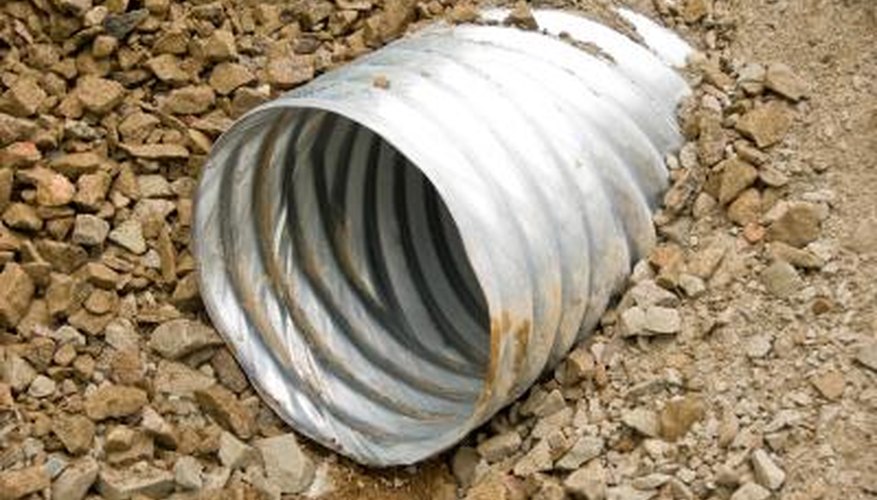In addition to installing a drainage system under your basement, a well-planned landscape requires a good drainage system too. Install a drainage system before laying down sod or creating your garden beds. Although considered by gardeners and farmers as beneficial, a drainage system has some disadvantages too. Learning the advantages and disadvantages of drainage systems will help you determine whether installing one will work best for your garden and the environment.
Advantage: Prevents Water Accumulation
Drainage systems can prevent water accumulation that can lead to flooding by directing the water away from your home. Water that over-accumulates in your yard may kill plants. Drainage systems also prevent the accumulation of stagnant water, which can encourage mosquitoes to breed.
Advantage: Reduces Soil Erosion
Over time, stagnant water accumulated can make soil muddy, which in turn can cause soil to erode. Drainage systems maintain balanced moisture in your garden to reduce soil erosion.
Advantage: Removes Toxic Materials and Disease Organisms
Continuous, heavy rains may cause the water to rise, which can lead to flash floods, especially when you live near a big body of water. Often these flash floods bring contaminated water into your soil. Drainage systems can remove these toxic materials by draining them away from your yard.
Disadvantage: Expensive
Installing a drainage system is a costly investment. You'll end up paying a high price, especially if you hire a professional to install your drainage system. You may also need a permit to install drainage systems, especially if your particular project requires multiple channels and deep excavations.
Disadvantage: Maintenance
Regular maintenance of your drainage system will ensure that it functions properly at all times, says the University of Illinois. You have to ensure that the outlet ditches of your subsurface systems are free from blockages caused by sediment build-up. You'll need to check that debris does not seal the inlet covers. If a tile of your drainage system breaks, you have to replace it. Removing water-loving trees, such as willow, elm, soft maple and cottonwood, from within 100 feet of the drain will keep your drain from blockages caused by overgrown roots, fallen leaves and branches coming from these trees. Ochre, an iron oxide that can block your drain pipe, may also build up; therefore, you constantly have to be on the lookout for it.
- Regular maintenance of your drainage system will ensure that it functions properly at all times, says the University of Illinois.
- You have to ensure that the outlet ditches of your subsurface systems are free from blockages caused by sediment build-up.
Disadvantage: Can Contaminate Bodies of Water
A research conducted by the University of Illinois has shown drainage systems can also contribute to contamination problems, especially when not properly maintained. According to the study, subsurface drainage systems can carry nitrate through the drain pipes, channelling it directly into the bodies of water such as streams, rivers and lakes.
